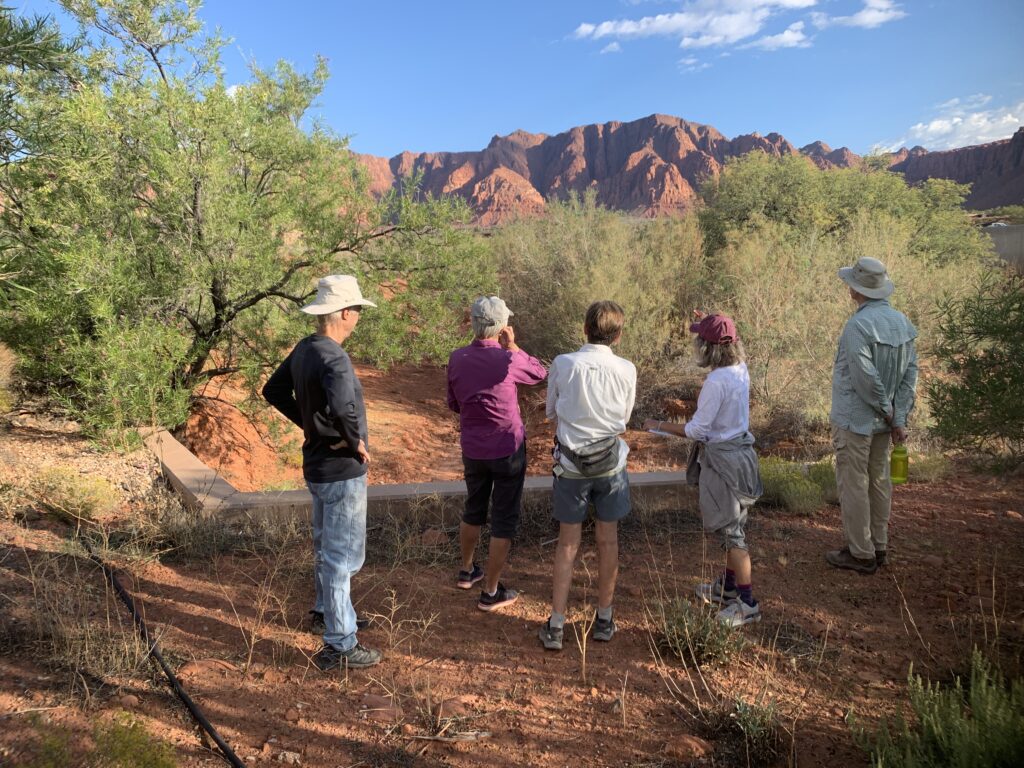
Learning to Build a Safer, More Connected Community
December 2023
Education brings evolution. Our thinking evolves as we understand how things work and what’s important. The same is true for practitioners of a discipline—they learn the risks and challenges of different approaches to a given problem.
Inviting the City of Ivins residents to learn more about the values driving the work of the Desert Preservation Initiative was the reason behind the first educational tamarisk walk led by DPI President Chuck Warren in mid-November.
Walking through the completed tamarisk removal in Kayenta’s Acequia Court Wash, DPI’s biggest project to date, gave those attending the chance to see firsthand how the landscape has recovered, with native plants appearing, including some not seen previously. In an area where the tamarisk was so thick a person could not walk through, the newly opened landscape now has more abundant water flowing and is moving away from a mono-culture to a landscape of greater variety. In addition, the overall risk of fire posed by tamarisk is greatly reduced.
Showcasing the work done, Warren noted how the removal practices of the non-profit have also evolved. One change has been from carrying out all the cuttings to leaving some cut tamarisk debris in place to prevent erosion and add organic plant material to the soil. In addition, while burning debris in place was discussed, that option has been taken off the table with large trunks and limbs hauled offsite for chipping and burning elsewhere. Some large trunks, however, are provided to the Southern Utah Woodturners clubs whose members create art pieces for sale at Gallery 873, which support the financial needs of DPI—a great community collaboration.
As tamarisk cannot be killed by cutting or burning, DPI uses the careful administration of herbicide to prevent regrowth, with renewed treatments every three months for a year. Each site is also monitored to track new plants emerging.
“Now I understand the process,” says Melanie Hess, after seeing the changes at Acequia Court. She and her husband Frank are now actively removing tamarisk on their property.
And that, Warren says, is a key value for DPI, “the community coming together, a bonding and uniting to meet the goals of fire safety and restoration of the beautiful desert plant life.”
